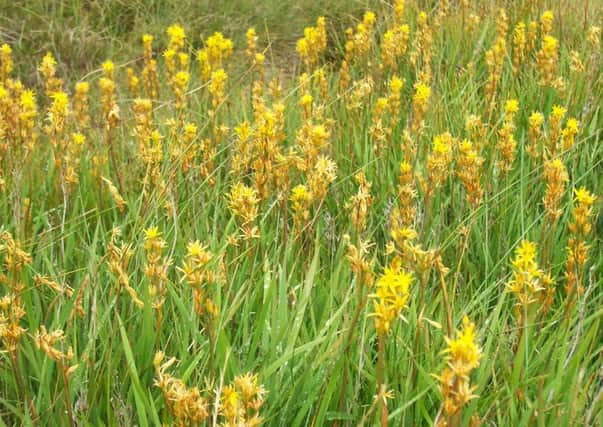Poisonous plant puts livestock at risk


Areas of boggy moorland are proving to be ideal breeding grounds for bog asphodel, the National Farmers’ Union (NFU) said, and the plant is being blamed on the deaths of 48 lambs in just three days on a farm in North Yorkshire.
The union said landscapes are being blighted by the plant much more frequently, partly down to management regimes put in place for agri-environment schemes.
Advertisement
Hide AdAdvertisement
Hide AdAgreements often include grazing prescriptions that can exclude sheep from the plant’s habitat for periods of time, giving it chance to develop, the NFU said. This, combined with the policy of ‘grip blocking’ which leads to boggy areas becoming much wetter, is the most likely explanation for the plant’s resurgence, the union said.
A number of cases were reported a couple of years ago in Cumbria, but now the plant is being reported in upland areas across Yorkshire and the North East and one NFU member who farms near Skipton recently lost 48 lambs.
The farmer’s agreement prevented him from grazing a 90-acre pasture between May and July, 45 acres of which is peaty marshland. This year a great swathe of bog asphodel appeared and within days of letting his flock back in lambs began to die.
The farmer is now in negotiations with Natural England about how to tackle the problem.
Advertisement
Hide AdAdvertisement
Hide AdJames Copeland, regional environment and land use adviser for the NFU, said: “We are concerned that this plant is becoming more prevalent and our members are potentially unaware of the dangers it poses.
“We have asked Natural England to warn those farmers involved in agri-environment schemes about bog asphodel and to work with individuals who subsequently find they have the plant on their land.
“We are also appealing for more information from farmers about the extent of the plant’s resurgence and would certainly like to hear from anyone whose animals are significantly affected. This evidence will help us raise the issue further with Natural England and secure the appropriate response.”
He said farmers that have bog asphodel on their land should carefully consider their grazing regime to minimise the risk of exposure.
Advertisement
Hide AdAdvertisement
Hide AdA spokesman for Natural England said: “We recognise the problems this plant can pose to livestock in certain circumstances and are working closely with the farming community to try to find a way of balancing the needs of farmers with the requirements of agri-environment schemes.
“This involves a number of measures including looking at grazing practices to reduce the likelihood of animals coming into contact with the plant when it is in flower. Where graziers may face difficulties, for instance from local habitat or seasonal conditions, we would urge them to contact their Natural England adviser to discuss possible solutions.”
To share information with the NFU about where the plant is growing email details to [email protected]
What is bog asphodel?
Found on acidic damp habitats – wet heaths, wet and boggy moorlands up to about 1,000m in elevation - it produces distinctive tall yellow flower spikes in summer.
Advertisement
Hide AdAdvertisement
Hide AdPoisonous to both sheep and cattle, eating the plant causes serious kidney problems and a photosensitive disorder called ‘saut’ in Cumbria; and ‘plochteach’ ‘yellowses’ and ‘head greet’ in Scotland.
The photosensitization causes various chemical reactions in the skin on exposure to the sun, resulting in tissue damage. It can be fatal but if caught early animals can be saved.